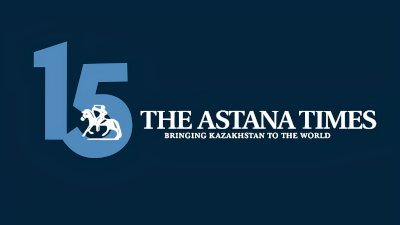Editor’s note: The Astana Times continues a section featuring articles by our readers. As a platform that values diverse perspectives and meaningful conversations, we believe that this new section will provide space for readers to share their thoughts and insights on various topics that matter to them and the AT audience.
One morning, my father called me, asking for advice and assistance in verifying the reliability of a website. The links he sent were advertisements for training in trading and spot cryptocurrency transactions.

Ainur Yesbossynova.
When I asked why, he hesitated, expressing doubt about whether he could earn as much elsewhere, especially since he would reach the official retirement age next year. His employer would likely ask him to leave.
After our conversation, I felt a deep sense of unease. Layoffs in the market, rising inflation, the devaluation of the tenge, and soaring prices for food and housing all made me question whether I would be able not only to support myself in the future but also help my parents, given the worsening economic conditions.
Adding to my anxiety, news headlines that evening were dominated by an announcement from the Ministry of Labor and Social Protection about a proposal to limit pension payments for working retirees in Kazakhstan. The government’s plan to cut pensions for working pensioners, threatening the financial security of Kazakhstan’s elderly and pushing many into poverty and precarious work, caused an uproar across society, prompting members of parliament to admonish the government for making baseless statements that sow discord between generations.
According to official data, the number of retirees in Kazakhstan currently stands at 2.413 million people, with the average combined pension amounting to 131,810 tenge (US$250). However, accurate data on the number of working retirees is lacking. The most recent figures are from 2022, when the working retiree population was 82,700. Analysts suggest these numbers may be understated, while the new initiative could lead to a surge in illegal work among retirees preferring not to disclose their employment to avoid losing pension income if the latest amendments are adopted. In this case, they would not be counted as “working.”
Consequently, we continue to lack a realistic picture necessary for budget planning and the development of effective public policies. A taxi driver nearing retirement age recently shared that an agency promised to help him find work abroad after obtaining a visa. “I need to help my children and grandchildren. Everything is getting more expensive, and our combined salaries are not enough,” he said.
The ministry’s explanation that “white-collar workers’ reluctance to leave their jobs” is the issue — also appears dubious, given that there were only 268 such workers in the third quarter of 2022, a 40.4% decrease compared to 2019. On the contrary, most retirees are employed in physically demanding sectors, like agriculture, forestry and fishing (62,400); warehousing or as drivers (3,600); construction (2,200) people; and manufacturing (2,300) people. Compared to 2019, the number of medical retirees increased by 57.9%, reaching just under 3,000. In total, 67.9%—or 56,100 retirees—are unskilled workers.
Unfortunately, a deeper look reveals that the reasons for continuing to work are rather about necessity, as pension funds are insufficient for living expenses. According to the Bureau of National Statistics, in the third quarter of 2024, the average salary in Kazakhstan reached 434,982 tenge (US$830), while the median wage was 308,717 tenge (US$589). However, neither these amounts nor pensions are enough to live comfortably in Kazakhstan’s major cities, where surveys suggest that an income of 700,000 tenge (US$1,335) to one million tenge (US$1,907) is required.
Moreover, many retirees are falling victim to financial pyramids and digital scams. Faced with rising inflation that drives up the cost of necessities, more elderly individuals are considering quick income-boosting schemes. However, such opportunities often come with high risks, potentially leading retirees to lose their savings.
Of course, certain cultural factors alleviate some of the pressures. For instance, Kazakhstan’s Eastern culture traditionally fosters close relationships between aging parents and their children, with the latter often taking care of their parents during old age. However, a new trend has emerged recently, where children and parents increasingly prefer to live separately. This raises another question: are middle-aged children with families, multiple children, mortgages and loans capable of financially supporting their aging parents?
This issue is complex. It affects not only retirees and their right to a dignified old age but also the economy’s stability. How can we ensure stable inflation within a 3–4% corridor when actual inflation is running at 20%? This issue also impacts labor and social stability, which is becoming increasingly relevant given the generational divide. Will Generations X and Y, who represent the majority of the workforce, be able to shoulder the financial burden of supporting pension payments for aging Baby Boomers while also funding benefits and grants for unemployed Zoomers searching for work and self-identity?
The author is Ainur Yesbossynova, a graduate student at the Nazarbayev University Graduate School of Public Policy.
Disclaimer: The views and opinions expressed in this article are those of the author and do not necessarily reflect the position of The Astana Times.


